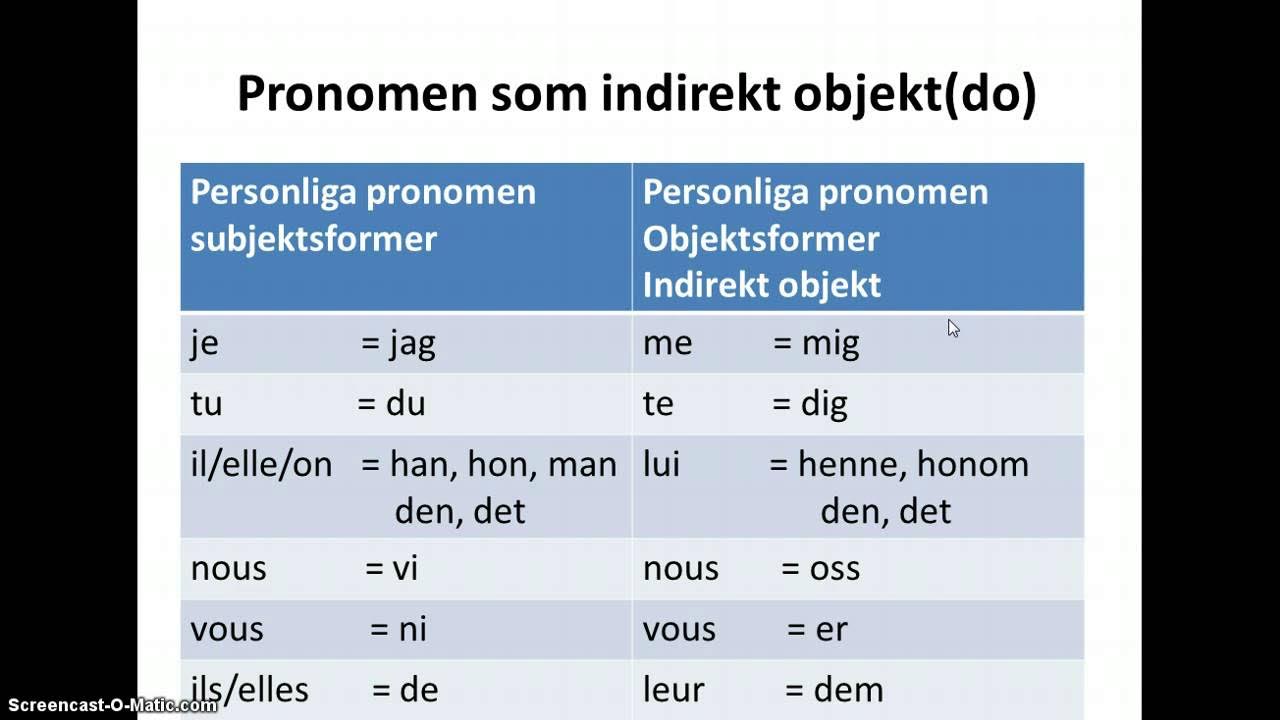PERSONAL PRONOUN| MACAM-MACAM PRONOUN|
Summary
TLDRIn this educational video, Firza explains the intricacies of personal pronouns, focusing on their roles as subjects, objects, and possessives. She categorizes pronouns into personal, possessive adjectives, and possessive pronouns, providing clear definitions and examples. The lesson covers the transformation of pronouns depending on their grammatical function, with special attention to common mistakes. Additionally, viewers are engaged with exercises to reinforce their understanding. The session concludes with motivational advice and encourages practical application to master English pronouns effectively.
Takeaways
- 😀 Personal pronouns are used to replace nouns referring to people, animals, or things and can function as subjects, objects, or possessive forms.
- 😀 Subject pronouns include 'I', 'you', 'he', 'she', 'it', 'we', and 'they', while object pronouns are 'me', 'you', 'him', 'her', 'it', 'us', and 'them'.
- 😀 Possessive adjectives like 'my', 'your', 'his', 'her', 'its', 'our', and 'their' indicate ownership and must be followed by a noun.
- 😀 Possessive pronouns such as 'mine', 'yours', 'his', 'hers', 'its', 'ours', and 'theirs' indicate ownership but do not require a noun afterward.
- 😀 The pronoun 'you' remains unchanged whether used as a subject or an object.
- 😀 When using possessive adjectives with plural nouns, the adjective remains unchanged (e.g., 'your cars', not 'yours cars').
- 😀 The contraction 'it's' (it is) differs from the possessive 'its' (belonging to it) in meaning and usage.
- 😀 Practice is essential for mastering pronouns; using techniques like sticky notes can aid memorization.
- 😀 Exercises help reinforce understanding of subject/object and possessive forms in sentences.
- 😀 The next lesson will cover reflexive pronouns, continuing the exploration of various pronoun types.
Q & A
What are personal pronouns?
-Personal pronouns are a type of pronoun that refer specifically to people, animals, or things. They can function as subjects, objects, or possessives in sentences.
How do personal pronouns change when used as subjects and objects?
-When used as subjects, personal pronouns include 'I', 'you', 'he', 'she', 'it', 'we', and 'they'. As objects, they change to 'me', 'you', 'him', 'her', 'it', 'us', and 'them'.
Can 'you' be both a subject and an object pronoun?
-'You' remains the same whether it is used as a subject or an object in a sentence.
What is the difference between possessive adjectives and possessive pronouns?
-Possessive adjectives, such as 'my', 'your', and 'his', are followed by a noun and indicate ownership. Possessive pronouns, such as 'mine', 'yours', and 'theirs', replace the noun and do not follow it.
What are some examples of possessive adjectives?
-Examples of possessive adjectives include 'my', 'your', 'his', 'her', 'its', 'our', and 'their'.
How do you form possessive adjectives for plural nouns?
-Possessive adjectives do not change form based on whether the noun is singular or plural. For example, 'your' remains 'your' whether it's one car or multiple cars.
What is an example of a sentence using a possessive pronoun?
-An example would be 'That book is mine.' Here, 'mine' replaces the noun 'book' to indicate possession.
What common mistakes should be avoided when using 'its' and 'it's'?
-'Its' is a possessive adjective meaning 'belonging to it', while 'it's' is a contraction for 'it is' or 'it has'. They are not interchangeable.
What is the structure of a sentence using a subject pronoun?
-A sentence using a subject pronoun typically follows the structure: Subject + Verb + Object. For example, 'He reads a book.'
What are reflexive pronouns, and when will they be discussed?
-Reflexive pronouns are used when the subject and object of a sentence are the same. They will be covered in the next video.
Outlines

Esta sección está disponible solo para usuarios con suscripción. Por favor, mejora tu plan para acceder a esta parte.
Mejorar ahoraMindmap

Esta sección está disponible solo para usuarios con suscripción. Por favor, mejora tu plan para acceder a esta parte.
Mejorar ahoraKeywords

Esta sección está disponible solo para usuarios con suscripción. Por favor, mejora tu plan para acceder a esta parte.
Mejorar ahoraHighlights

Esta sección está disponible solo para usuarios con suscripción. Por favor, mejora tu plan para acceder a esta parte.
Mejorar ahoraTranscripts

Esta sección está disponible solo para usuarios con suscripción. Por favor, mejora tu plan para acceder a esta parte.
Mejorar ahora5.0 / 5 (0 votes)






